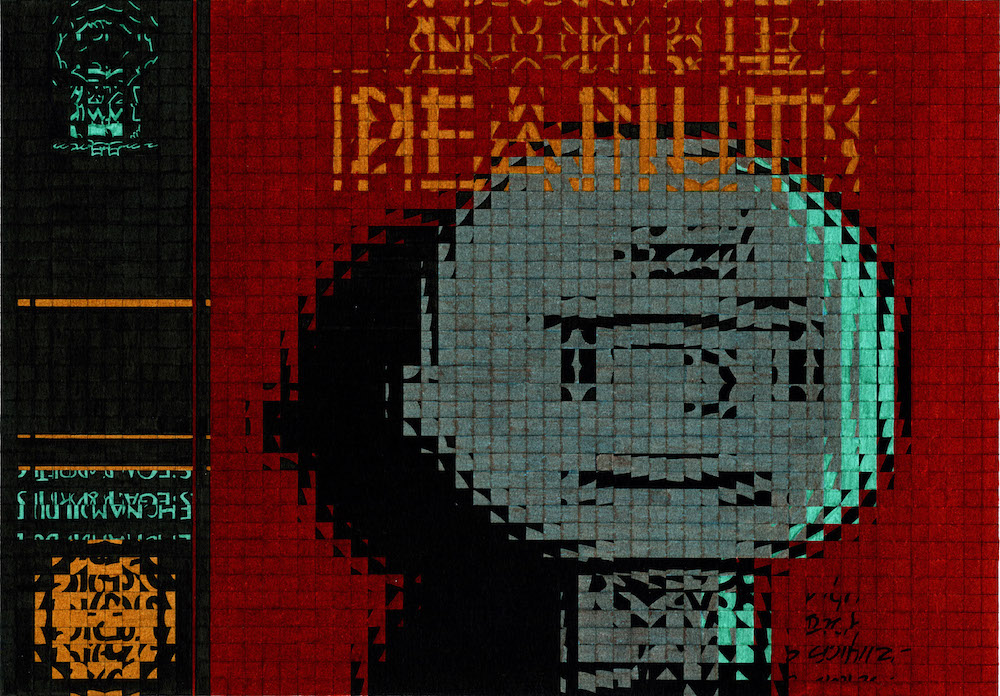- Image: Jérôme Puigros-Puigener, “2280 — stunaep”, 2019
Benoît Crucifix défendra sa thèse publiquement le mardi 25 août 2020 à 15h à l’Université de Liège, via un dispositif de visio-conférence. Le jury est composé de Björn-Olav Dozo (ULiège, promoteur), Véronique Bragard (UCLouvain, co-promotrice), Jan Baetens (KU Leuven), Jared Gardner (Ohio State University), Maud Hagelstein (ULiège, présidente) et Fabrice Preyat (ULB).
Drawing from the Archives. Comics Memory in the Graphic Novel, post 2000
Prenant comme point de départ la déclaration aphoristique d’Art Spiegelman, « the future of comics is in the past », cette thèse apporte un nouveau regard sur le roman graphique américain, saisi moins comme une rupture radicale que dans son rapport réflexif à l’histoire de la bande dessinée comme mémoire et héritage. Il s’agit de tracer le regard rétrospectif de dessinateurs contemporains comme Chris Ware, Seth, Charles Burns, Daniel Clowes (entre autres) : malgré leurs idiosyncrasies et diversité de styles, cette génération partage une fascination pour l’histoire de la bande dessinée comme un héritage visuel qui innerve leurs pratiques et invite à le transmettre à de nouveaux publics. Ces dessinateurs trouvent ainsi dans la mémoire collective une manière de négocier l’institutionnalisation et l’hybridation intermédiatique qui transforment la bande dessinée au tournant du vingt-et-unième siècle. En amont des processus de canonisation, cette thèse étudie son comment et ses usages, les manières de faire avec le passé. Différents gestes de transmission font apparaître différentes manières de s’approprier le passé et ses traces matérielles pour donner forme à de nouveaux usages : archiver, exposer, rééditer, fausser, copier, détourner — autant d’actes performatifs distingués en chapitres et analysés à l’aide des études de cas. En portant son attention sur de tels gestes de transmission, cette thèse étudie des lieux institutionnels de la mémoire (le musée, la bibliothèque, le marché du livre) mais révèle également des gestes vernaculaires et des usages souterrains, en marge ou en collaboration des processus traditionnels de patrimonialisation.
At a turning point of its institutionalization and in a fast-changing media environment, the graphic novel prompted a fascination with the history of comics and a rediscovery of semi-forgotten works: by 2004, the graphic novel was a well-established phenomenon, and its stabilization opened up a moment when moving forward meant looking backward, caught by Art Spiegelman’s oft-quoted aphorism “the future of comics is in the past.” This interplay of innovation and tradition, rupture and continuity, is a puzzling phenomenon in the graphic novel, and yet one that has remained comparatively unaddressed. For all their differences and idiosyncrasies, cartoonists as Chris Ware and Art Spiegelman—but also Seth, Charles Burns, Daniel Clowes, and others—share a common visual heritage and an interest in passing it on to new readers and next generations. This dissertation is an inquiry into the gestures of transmission that embed the contemporary graphic novel within a longer history and a collective memory. It is organized around a set of practices that, taken together, all illustrate ways of ‘drawing from the archives’ in its twofold meaning: as a process of selecting from material repositories and as an appropriation of its objects that entails a more or less significant kind of graphic intervention or manipulation. Whether it is within the framework of an exhibition or of on an online platform, drawing, or redrawing, or more generally using and displacing drawn images are here orchestrated as performative gestures of transmission. In focusing on such gestures, this dissertation embraces both settings in which traditional gatekeepers have a strong hold (the museum, the library, the book market) and where comics might (un)willingly integrate or replicate the canonizing mechanisms of an official culture; and makes room for more attention to smaller vernacular gestures that establish and sustain a relationship with the past in the margins of (or in collaboration with) more traditional mechanisms of preservation.
Vous désirez assister à la soutenance de thèse ?
La session est publique et accessible à tous via ce lien : https://tinyurl.com/y63lky3q
